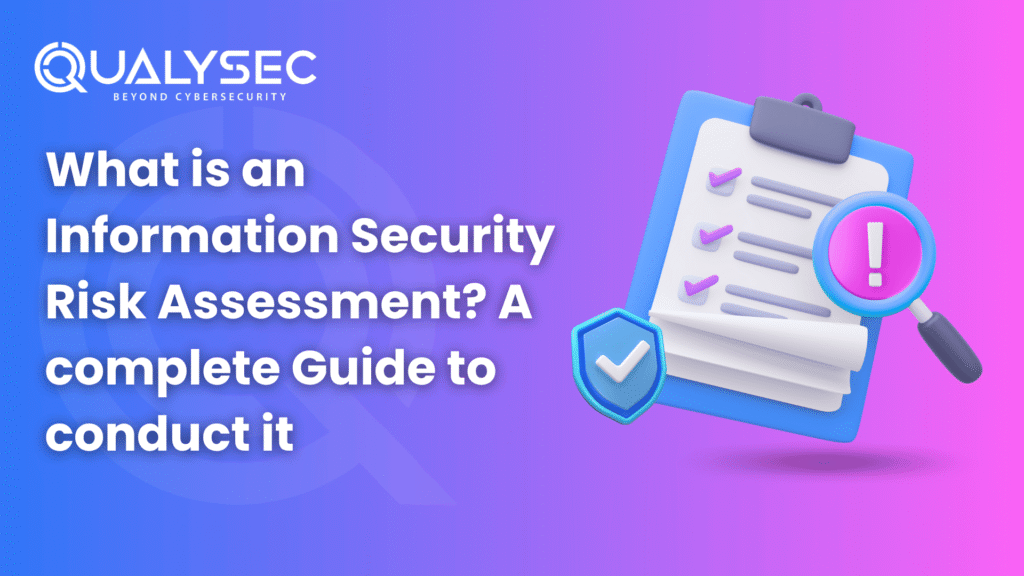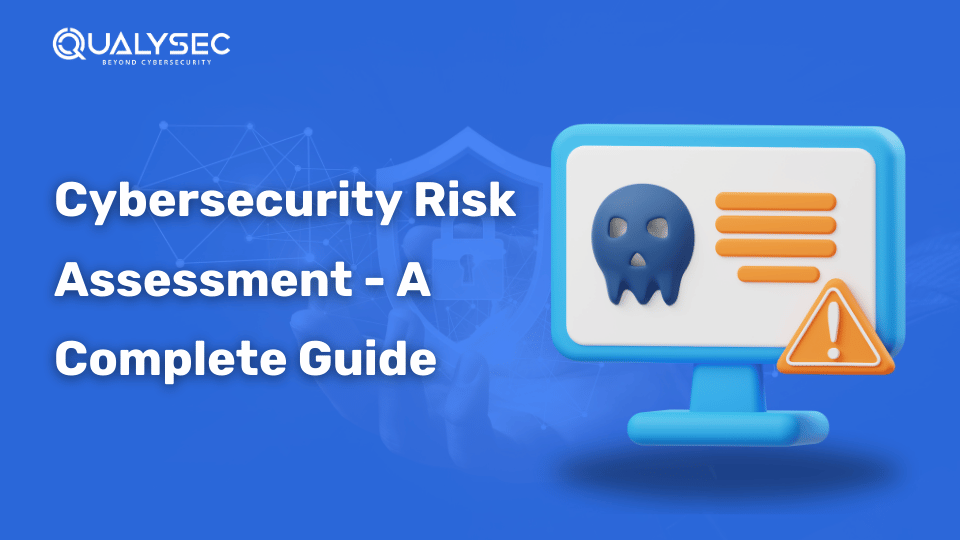What is an Information Security Risk Assessment? A complete Guide to conduct it
Rapid growth in the digital economy in India also means more risks. Cyber attacks now affect financial institutions and healthcare systems by stealing data or demanding payments and these attacks are often more advanced and dangerous than before. Since organizations are now using clouds and increasing digital activities, they must take more than just traditional security tools. An information security risk assessment is the foundation for developing a protected IT environment. It assists businesses in spotting their biggest risks, learning how these risks may harm the business and dealing with them before they do serious harm. The guide is created for Indian enterprises, startups and public sector organizations that prefer to approach cybersecurity anticipatorily instead of fixing the same issues again and again. What Is an Information Security Risk Assessment? An information security risk assessment is the process of identifying, analyzing, and prioritizing potential threats to your organization’s data and IT systems. It allows you to spot problems in your computer systems, connectivity and work habits and consider the possible outcomes and likelihood of attack. A security risk assessment explores the circumstances around each vulnerability in contrast to a simple security scan. When a database has several layers of shields, a well-known issue might not be urgent. In addition, leaving customer data exposed through a web portal could make it a major risk. The goal is not just to find risks, but to: For these reasons, assessing risks forms the basis of any cybersecurity strategy, especially in regulated industries like BFSI, healthcare or government. Types of Information Security Risk Assessments A company’s industry, size and use of technology determine which risks it faces. So, there can’t be a single way to handle information security risk assessments. Most Indian enterprises usually use the following types of systems: 1. Technical Risk Assessment Works on spotting weaknesses in programming, devices and IT systems. It requires reviewing how you set up your systems, who has access, the encryption rules and patch status. Best for: Tech-heavy organizations or SaaS companies where infrastructure is central to operations. 2. Compliance-Based Assessment Created to judge how well your processes and systems comply with the Indian IT Act, ISO 27001, guidelines by the Reserve Bank of India or HIPAA. Best for: BFSI, healthcare, edtech, or any sector dealing with regulated data. 3. Operational Risk Assessment Investigates risks linked to internal activities like mistakes with data, errors by employees and inadequate processes. Best for: Medium to large enterprises managing large volumes of internal or data security risk assessment 4. Third-Party Risk Assessment Examine the potential risks associated with vendor risk assessment, cloud providers, or other external services your organization trust on. Best for: Any organization with a complex supply chain or reliance on third-party platforms. 5. Strategic Risk Assessment Takes into account greater company risks, for example, mergers, new products or trying to expand into new markets. It joins information technology risk assessment to the future plans of the business. Best for: Enterprises undergoing growth or restructuring phases. Key Steps in Conducting an Information Security Risk Assessment A good risk assessment method links the technology’s weak points to what harms could happen to the business. A clear framework helps Indian organizations, particularly those handling confidential user data or operating in controlled industries, to be careful and lawful. Step 1: Asset Identification List all the information assets in the organization. Examples are hardware, software, places where data is kept, network components and even third-party tools. You need to know which assets are important before proceeding in cyber security. Step 2: Threat and Vulnerability Detection Recognize malware, insiders and DDoS as possible threats. After that, relate the risks to the weaknesses in your systems, applications and processes. Nearly always, this step consists of scanning for vulnerabilities and interviewing the people in charge. This is an essential part of an application risk assessment and network security assessment Step 3: Risk Analysis Assess the probability that a risk will happen and how much damage it could do. Risk priorities can be identified by using qualitative (low, medium, high) or quantitative approaches (like financial cost). Now is the time to divide lower-level issues from major exposures. Step 4: Risk Evaluation and Prioritization Check if your risks are within the risk limits you have set for your organization. When talking about Artificial Intelligence (AI), it is important to consider the regulatory and business contexts. HIPAA risks might be more important to a healthcare provider than just having general IT problems. Step 5: Mitigation Planning Generate strategies that allow your organization to manage or get rid of identified risks. It may consist of fixing security holes, adjusting settings or updating the rules and training for employees. Step 6: Documentation and Reporting Collect your results and turn them into a simple report for the decision-makers. Ensure there is a summary of the project, clear technical risk listings and ideas for minimizing those risks. By documenting, the company is more ready for any future checks or audits. Step 7: Continuous Monitoring Risks keep changing as new threats and technology show up. After important IT changes or incidents, establish a routine to re-assess. If you constantly keep an eye on your network security, it will continue to fit your organization’s risk profile. Common Challenges in Information Security Risk Assessments Performing an information security risk assessment is not limited to running through a list of steps. Dealing with sensitive data often reveals more operational issues than what was expected for Indian businesses. Below is a list of the challenges seen most often: 1. Poor Asset Visibility Not knowing all the systems, applications and data in a network leads to important risks being left out, mainly with cloud or a hybrid model. 2. Misalignment with Business Impact Data and analyses are usually shared apart from business circumstances. An issue with a medium severity rating might result in critical risk if it is found in a payment gateway or patient records. 3. Excessive Dependence on Automated Tools Scanning





